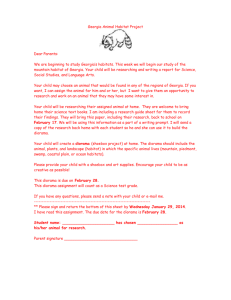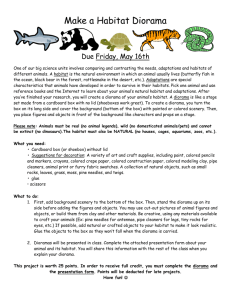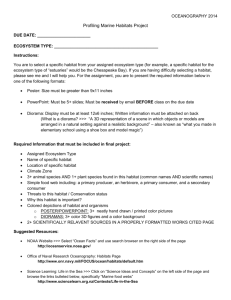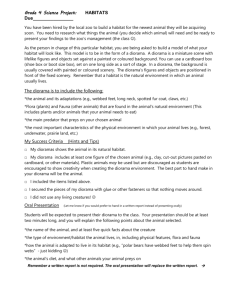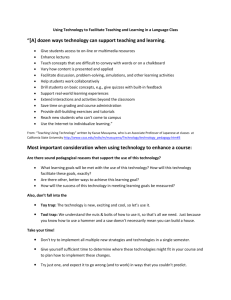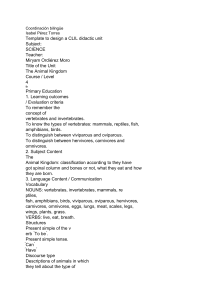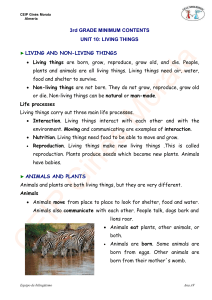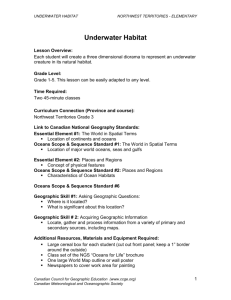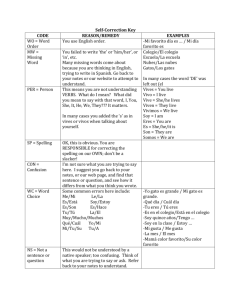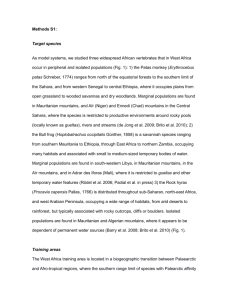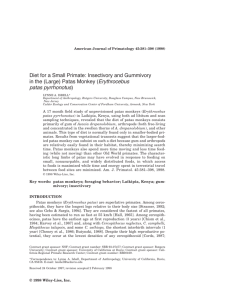Animal Presentation
advertisement
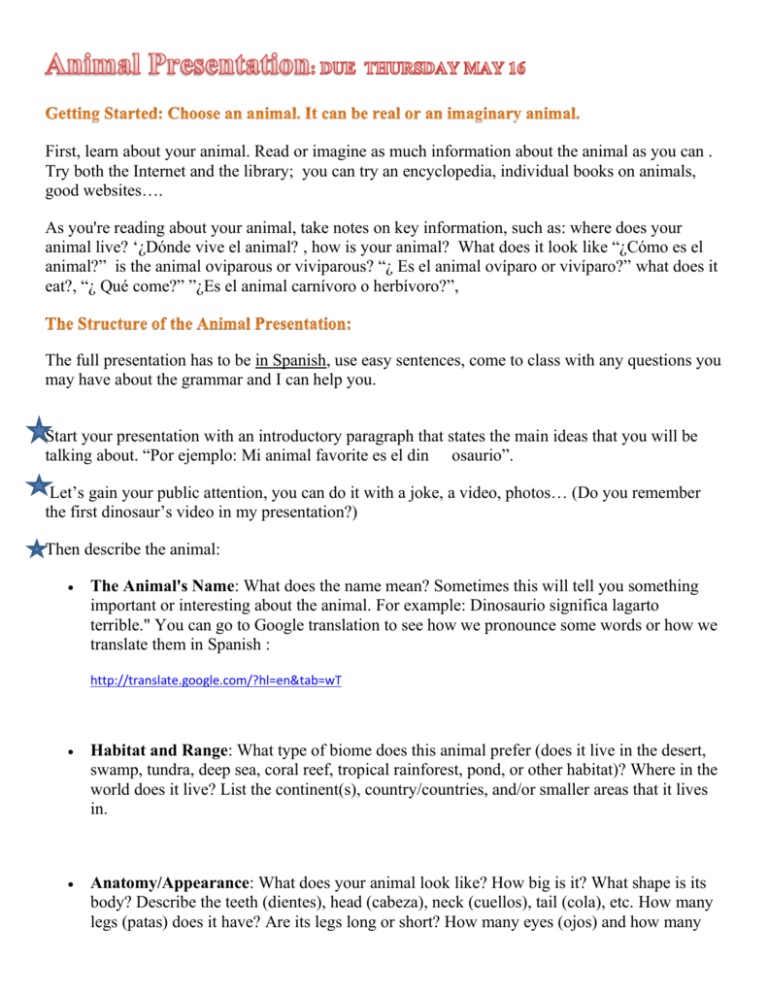
First, learn about your animal. Read or imagine as much information about the animal as you can . Try both the Internet and the library; you can try an encyclopedia, individual books on animals, good websites…. As you're reading about your animal, take notes on key information, such as: where does your animal live? ‘¿Dónde vive el animal? , how is your animal? What does it look like “¿Cómo es el animal?” is the animal oviparous or viviparous? “¿ Es el animal ovíparo or vivíparo?” what does it eat?, “¿ Qué come?” ”¿Es el animal carnívoro o herbívoro?”, The full presentation has to be in Spanish, use easy sentences, come to class with any questions you may have about the grammar and I can help you. Start your presentation with an introductory paragraph that states the main ideas that you will be talking about. “Por ejemplo: Mi animal favorite es el din osaurio”. Let’s gain your public attention, you can do it with a joke, a video, photos… (Do you remember the first dinosaur’s video in my presentation?) Then describe the animal: The Animal's Name: What does the name mean? Sometimes this will tell you something important or interesting about the animal. For example: Dinosaurio significa lagarto terrible." You can go to Google translation to see how we pronounce some words or how we translate them in Spanish : http://translate.google.com/?hl=en&tab=wT Habitat and Range: What type of biome does this animal prefer (does it live in the desert, swamp, tundra, deep sea, coral reef, tropical rainforest, pond, or other habitat)? Where in the world does it live? List the continent(s), country/countries, and/or smaller areas that it lives in. Anatomy/Appearance: What does your animal look like? How big is it? What shape is its body? Describe the teeth (dientes), head (cabeza), neck (cuellos), tail (cola), etc. How many legs (patas) does it have? Are its legs long or short? How many eyes (ojos) and how many body parts does it have? (¿Cuántos ojos y partes del cuerpo tiene? ) Is the animal oviparous or viviparous? Include pictures or other visuals. Diet: What does your animal eat and how does it get its food? Is it an herbivore (hebívoro), carnivore (carnívoro), omnivore (omnívoro). Again if you need help with the Spanish I will be in my office before and after school. You can also find a great pronounciation of every word at Google translations. Something Special: Is there anything special about this animal? This can often be the best part of the presentation, taking you off on interesting topics End the presentation with a closing paragraph that summarizes what you wrote and learned. Visual Presentation Support: You could use a board with pictures, figures and your guideline presentation. Just remember that you would not need to write everything you are going to present. You can also use a power point presentation and we will use the smart board to present it like I did in class. Just remember that you would not need to write everything you are going to present. It is going to be just a guide. Class example: You could also build a Diorama with the animal habitat. You can have your notes as a presentation guideline. Guides on how to do the diorama in the following website: http://www.firstpalette.com/Craft_themes/Animals/habitatdiorama/habitatdiorama.html The Following is a Rubric For Assessing each Part of Your Research Report: . Beginning 0-15 Accomplished 16-20 Excellent 21-25 Possible Points 75 Oral Presentation Only one or two Grammar use Many spelling errors. Voice is and Spell is and grammatical loud and engaging. perfect. Voice is errors. Voice is Student fumbles loud, pleasant, quiet and over words in engaging, and monotone. presentation. smooth. Student Student reads. Student looks at does not read. audience. 1. Appearance/Organization Good organization. None or Presenters had minimum effort Well organized knowledge of made by the presentation, information. student. Poor typed or very Evidence of organization. well written, sometime spent Presenters accompanying seemed preparing. Legible illustrations, somewhat lost. writing, figures or videos Little evidence accompanying of preparation. illustrations . Over two days late . Timeliness A day Late Handed in on time
